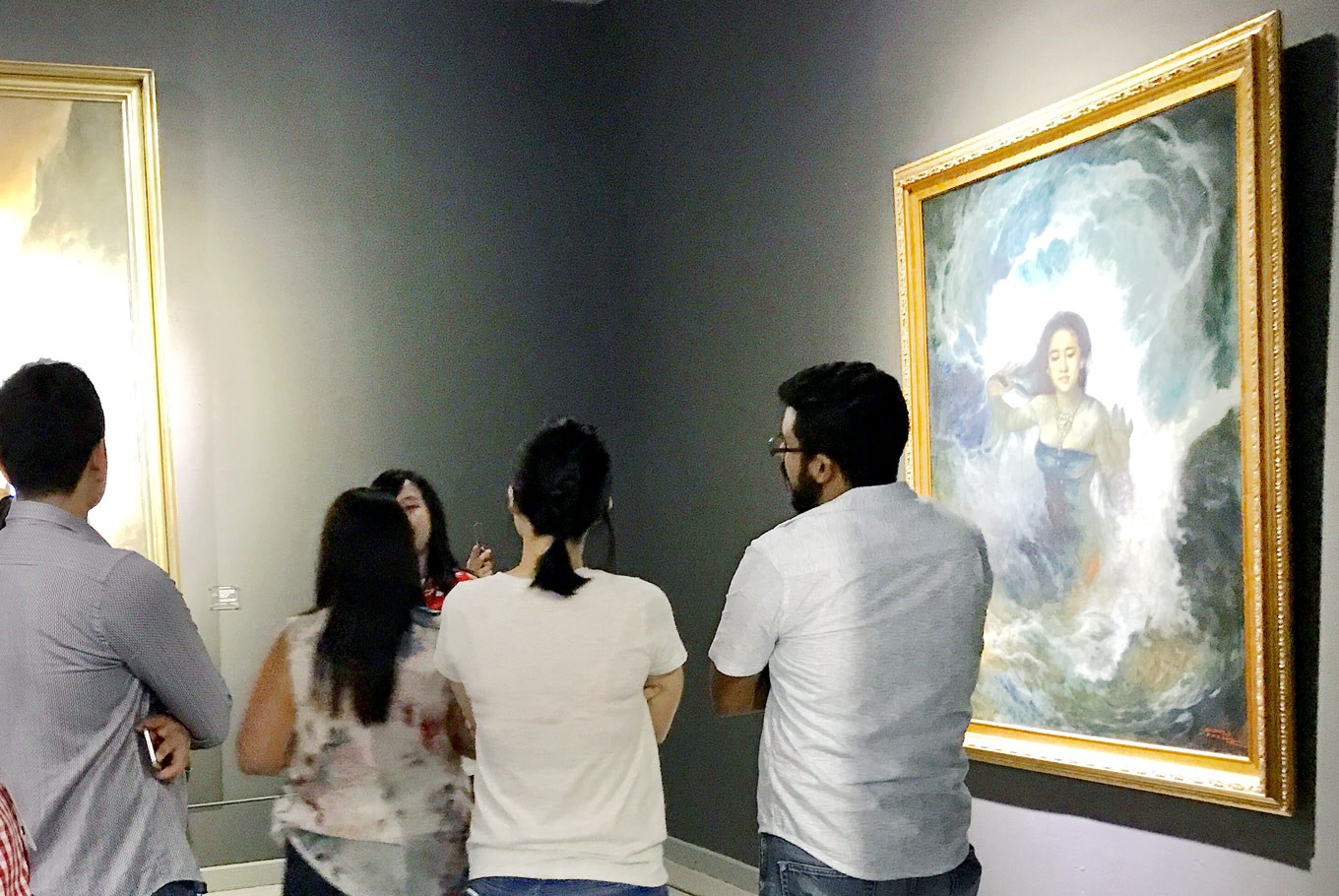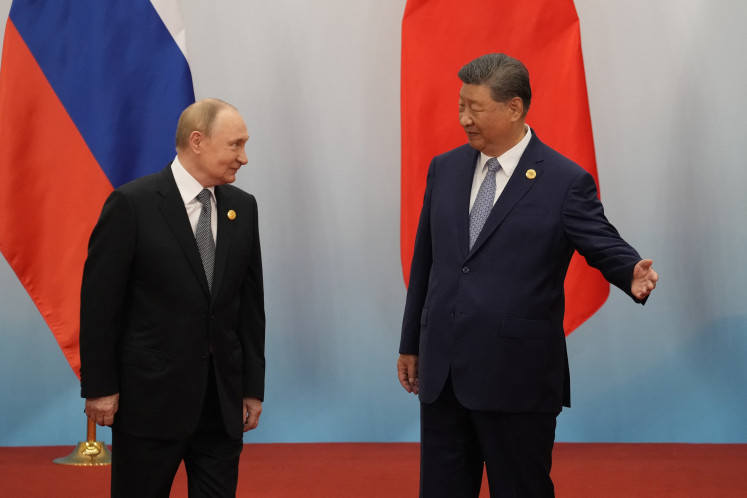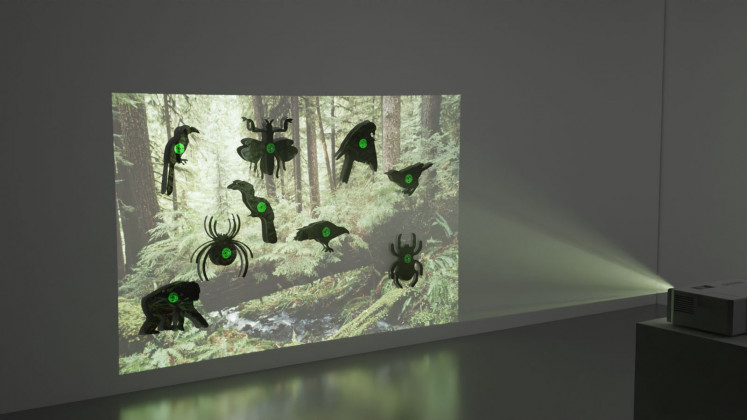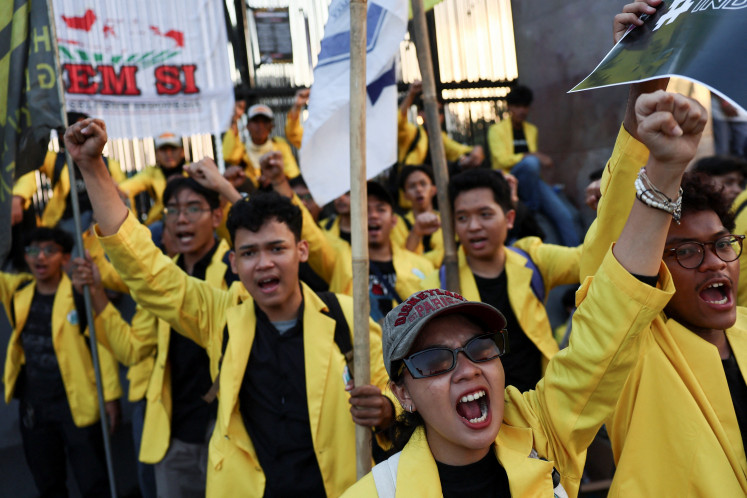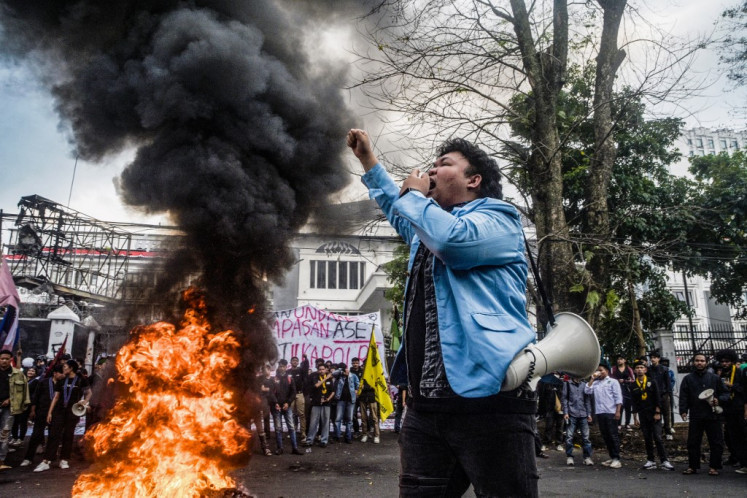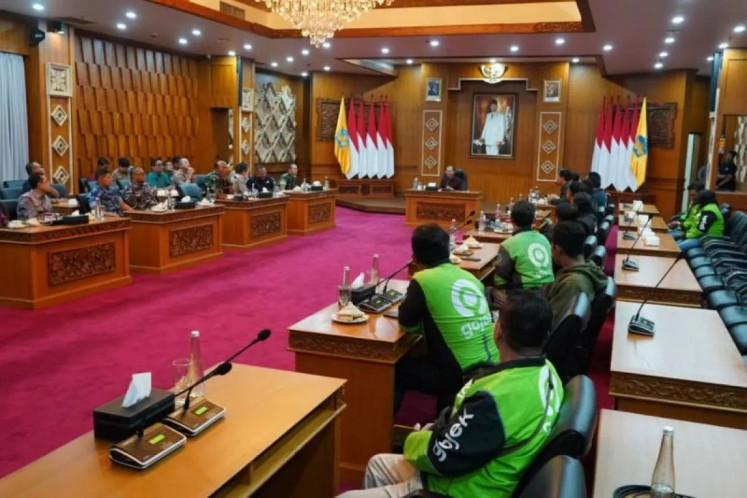Popular Reads
Top Results
Can't find what you're looking for?
View all search resultsPopular Reads
Top Results
Can't find what you're looking for?
View all search resultsNyai Roro Kidul: Between fact and myth
An exhibition of the State Palace’s painting collection staged at the Indonesian National Gallery in Jakarta has drawn considerable public attention.
Change text size
Gift Premium Articles
to Anyone
As of mid-August, more than 15,000 people have visited the showcase, which runs until Aug. 30.
The exhibition’s appeal does not only come from the works of maestros like Walter Spies, Raden Saleh, Lee Man Fong, Ramualdo Locatelli, Itji Tarmizi and Theo Meier, but also from Basoeki Abdullah’s painting of Nyai Roro Kidul, mythical Queen of the Southern Sea.
This particular painting is very familiar to the public, although only in the form of its reproductions now widely found adorning barber shops, restaurants and offices. If fortunate, people can observe it directly at the State Palace, which is open to the public only on certain occasions.
In the fine arts community, Nyai Roro Kidul has been repainted over a thousand times by different painters, both novices and professionals. Therefore, it’s no surprise that the exhibition’s visitors crowd around the image in the display room, trying to comprehend the myth and unveil the mystery behind it.
Many stories have filled the background of the creation of Nyai Roro Kidul. It was said that Basoeki Abdullah’s ties with Nyai Roro Kidul began one midnight in early 1933 in Parangtritis, Yogyakarta. Basoeki was meditating, asking for God’s guidance at the seashore. In his meditation, Nyai Roro Kidul came, whispering to the painter that he should return home as something was waiting for him.
Read also: Palace art collection belongs to Sukarno family: Guruh Sukarno Putra
When he reached his home at dawn, he found a letter lying on his table. The note gave “instructions” for Basoeki to promptly prepare a thick jacket to face a winter in the Netherlands. The mysterious message was written by his uncle, Sulaiman Mangunhusodo.
At noon, he received an official letter from the Catholic Mission stating he had been awarded a scholarship to study painting at Koninklijke Academie van Beeldende Kunsten (Royal Painting Art Academy) in The Hague.
Before departing for the Netherlands, Basoeki was told to broaden his social interaction in Bandung. There, he stayed with intellectual RMP Sosrokartono and met former president Sukarno.
He told Sukarno about Nyai Roro Kidul, who responded spontaneously, “It’s just a myth!”
Over a decade later, when Sukarno became president, Basoeki remembered the meeting in Bandung. In 1955, Basoeki painted Nyai Roro Kidul, which was later bought by Sukarno.
In 1963, Basoeki proposed that the Nyai painting be kept in the Pelabuhan Ratu Resort, the president’s new “palace” in the southern coast of West Java. Sukarno firmly refused.
Pelabuhan Ratu Resort, also called Pesanggrahan Tenjoresmi Pelabuhan Ratu, has an interesting tale. The mansion, located in Citepus village, Pelabuhan Ratu, has spread a mystical story connected with the southern Sea Queen. Tour guides are fond of telling the supernatural lore to visitors.
“Believe it or not, Nyai Roro Kidul often visits and appears here. When she arrives, the sea calms down and the clouds gather over the resort,” they say.
In 1954, Sukarno and his wife Hartini were searching for a location to build a house and found the most ideal place by the seashore, originally belonging to an Indonesian Armed Forces major, Mantiri.
But the construction of the resort started only in 1962, with RM Soedarsono and F. Silaban as architects. The delayed development was contributed to several reasons, including Sukarno’s intention to wait for the completion of Samudra Beach Hotel, which was built with Japan’s war reparations and meant to welcome athletes for the 1962 Asian Games and the 1963 Games of the New Emerging Forces (Ganefo).
When the three-story resort was built, according to the myth, Nyai Roro Kidul, who lives around Parangtritis Beach, frequently visited Pelabuhan Ratu Resort. But the resort’s “guards” were disinclined to welcome her and respectfully requested her to return to Parangtiritis Beach, which enraged her.
The queen, always clad in a green kebaya (traditional long-sleeved blouse), is persistent in her desire to visit the resort and keeps going to see Pelabuhan Ratu, where she must “rent” room 308 at Samudra Beach Hotel. Until now, tales of the mystical room, which displays the image of Nyai Roro Kidul repainted from the work of Basoeki Abdullah, live on.
With the legend further circulating, Nyai Roro Kidul is said to be traveling to Pelabuhan Ratu beach more frequently, using a coach drawn by seven horses and trying to invite anybody dressed in green to join her voyage into the vast ocean.
Whenever he was at the resort, Sukarno occasionally told the lore to his distinguished guests, including the incident in which an official of the Bulgarian Embassy died on the shore in 1965, supposedly because he had worn a green undergarment.
That’s why former United States ambassador Marshall Green was always doubtful when Sukarno invited him to visit Pelabuhan Ratu. “Mr. President, I’m afraid my name, which is Green, might attract Ratu Kidul. I still want to have leisure time on Florida Beach, you know,” he said, as recounted by historian Solichin Salam.

